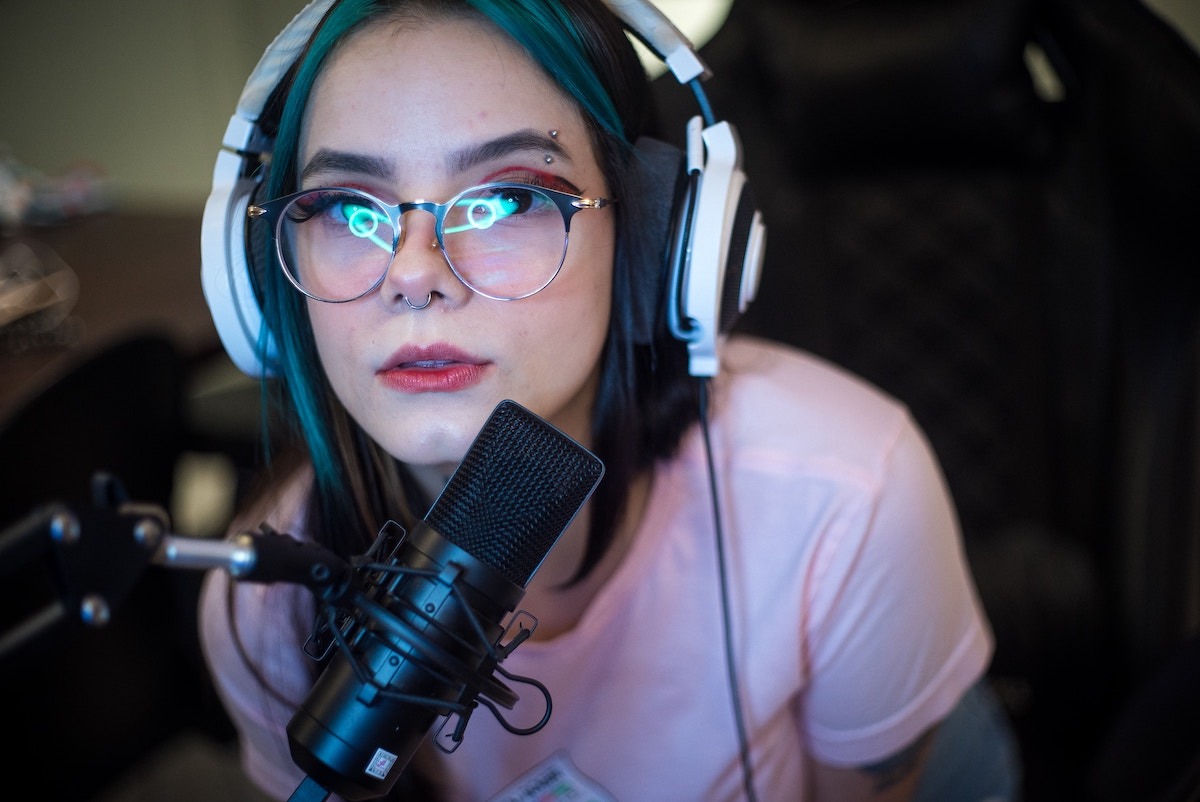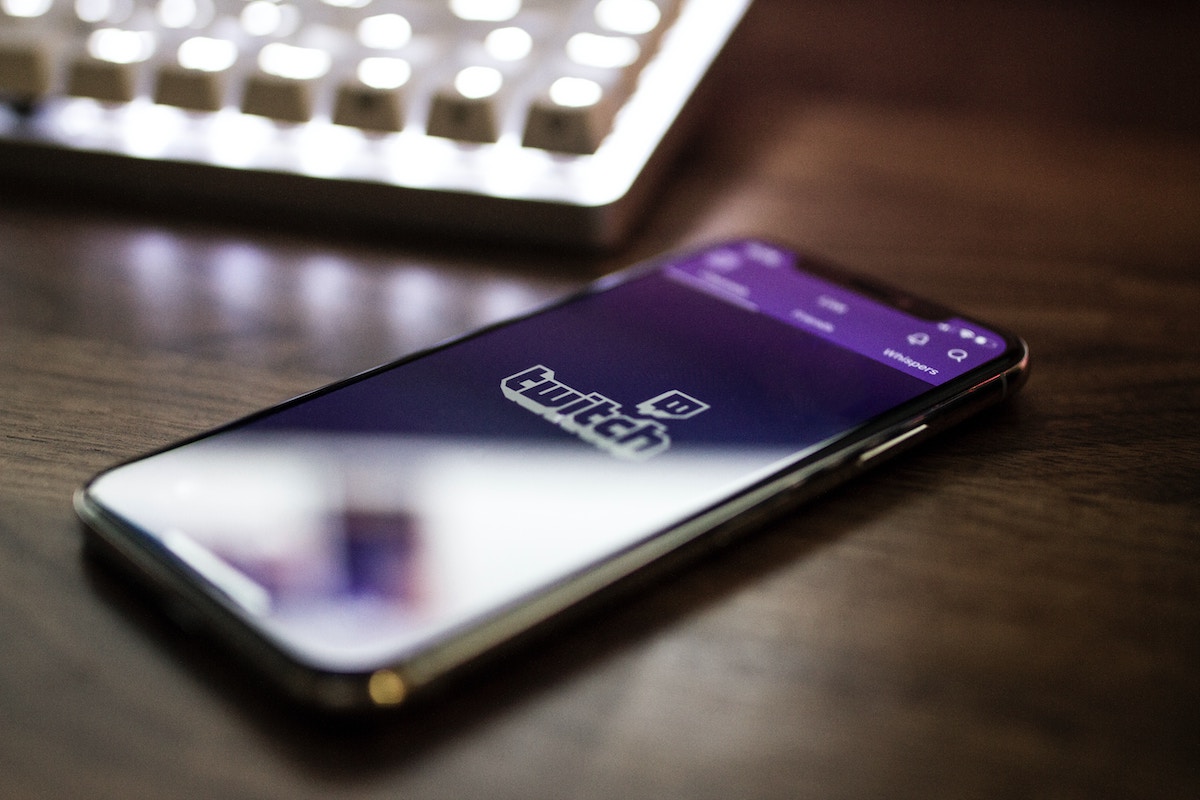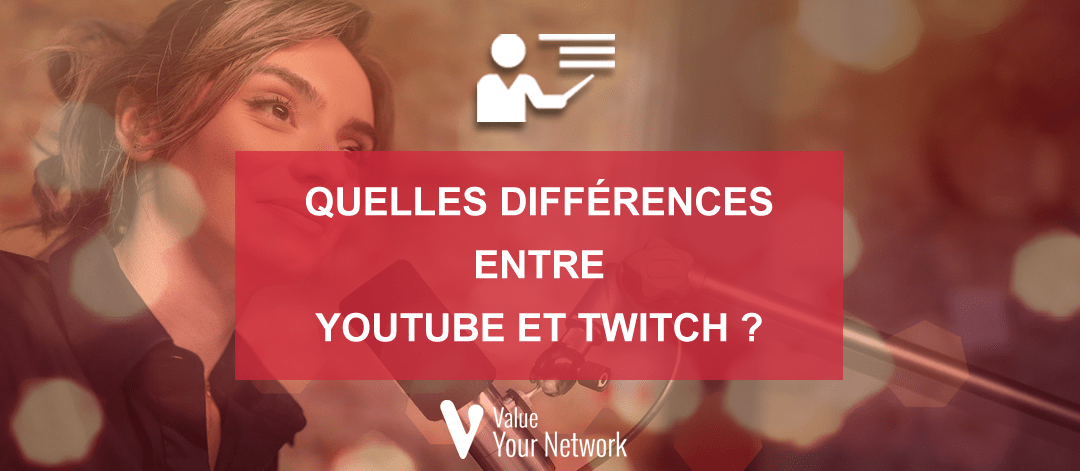Discover the differences between YouTube and Twitch in terms of remuneration models, content, user interaction and more. Choose the platform that's right for you.
Two platforms in particular stand out when it comes to streaming and sharing video content: YouTube and Twitch. While each of these platforms offers unique opportunities for content creators and viewers, they have distinct features that make them unique. While both are giants in their field, they have distinct features and functionality that appeal to different audiences. Understanding the differences between YouTube and Twitch is essential for users and content creators looking to optimize their online presence and engage their audience effectively.
We'll look at their unique features, the audiences they target, and the various possibilities they offer for streaming and delivering video content.
Key differences between YouTube and Twitch: a complete analysis
YouTube: The video-on-demand giant
YouTube, launched in 2005, has become synonymous with video sharing online. Its strength lies in its ability to offer a vast library of varied content, from tutorials and product reviews to vlogs and short films.
Key YouTube features :
- Videos on demand : YouTube allows users to upload, view and share videos at any time.
- Monetization : Content creators can earn money thanks to advertising, paid subscriptions and super chats.
- Content diversity : With millions of videos available, YouTube covers almost every subject imaginable.
Twitch: The platform of choice for live streaming
Twitch, primarily known for video game streaming, has expanded its offering to include live broadcasts of music, chat and even cooking.
Twitch's unique features :
- Live streaming : Twitch focuses on real-time streaming, offering instant interaction between streamers and their audience.
- Gaming community : The platform is a gamer's paradise, with live broadcasts of tournaments, gaming sessions and game discussions.
- Monetization : Streamers can earn money through subscriptions, donations and partnerships.
Business models
In our ever-changing digital world, YouTube and Twitch are two major platforms that have affected the way content creators are remunerated for their work.

Paying creators on YouTube
On YouTube, content creators are remunerated primarily through ad monetization. For each ad displayed before, during or after their video, creators receive a certain portion of the advertising revenue generated. This, however, is subject to specific threshold requirements in terms of number of subscribers and viewing minutes.
Compensation for streamers on Twitch
On Twitch, on the other hand, streamers can earn money from their viewers' paid subscriptions, which offer exclusive benefits such as access to special badges and ad exemption. Revenue is also generated by sharing bits (the virtual currency used for tipping on the platform) and ads broadcast during streams.
Partnerships and advertising
Partnerships and advertising represent another source of revenue for creators on both platforms. Creators can enter into partnership with brands to show and discuss their products in their content, generating additional revenue.
Donation and support systems
Finally, creators can also receive donations and financial support from their audience. These donation systems, where viewers send money directly to their favorite content creators, play a crucial role in the monetization of streaming platforms like Twitch.
Contents
The type of content you can find on YouTube and Twitch varies greatly, reflecting the different approaches these platforms take to engaging their audiences.

Type of content on YouTube
YouTube is a versatile platform that hosts a wide range of content. Whether it's music, movies, TV shows, tutorials, vlogs, product reviews, comedy sketches and more, there's content for every niche imaginable.
Type of content on Twitch
Twitch, on the other hand, focuses primarily on live streaming, particularly around video games. While other types of content such as cooking, art and music are gaining in popularity on Twitch, the core of the platform remains gaming-related content.
Broadcast formats
On YouTube, most content is pre-recorded and edited before being uploaded for viewing. By contrast, Twitch focuses primarily on live broadcasts, which offer real-time interaction with viewers.
Interaction with viewers
The way creators on YouTube and Twitch interact with their audiences also sets these platforms apart.
Live chat on Twitch
On Twitch, live chat plays a central role in the streaming experience. This enables real-time interactivity between streamer and viewers, creating a greater sense of proximity.
Comments and interactions on YouTube
On YouTube, creators interact with their audience primarily through the comments section under each video. Viewers can leave comments, questions and feedback, to which the creator can respond.
Live events and group chat
What's more, both platforms offer the possibility of creating live events and group chats, enabling advanced interaction between creators and their audience.
Platforms and applications
The availability of YouTube and Twitch on a variety of platforms and applications has also contributed to their growing popularity.

Accessibility and compatibility
YouTube is available on virtually all Internet-connected devices, including smartphones, tablets, laptops, desktops, game consoles and smart TVs. Twitch, although primarily a game streaming platform, is also available on a variety of devices.
Mobile applications
Mobile apps for YouTube and Twitch are widely available, making content accessible anytime, anywhere.
Use on different devices
It's interesting to note that, while YouTube is more widely used for on-demand content, Twitch dominates in the field of live content, particularly in the gaming segment.
Community and audience
YouTube and Twitch also differ in terms of their community and audience.
Audience size on YouTube
YouTube, as the second most visited website in the world, has an extremely large and diverse audience.
Twitch audience size
Twitch, on the other hand, has a more niche audience, mainly interested in video games and live content. However, this audience is highly engaged and spends a considerable amount of time on the platform.
Audience types
Comparing the two, Twitch tends to attract a younger, more male audience, while YouTube's audience is more diverse in terms of age and gender.
Policies and regulations
YouTube and Twitch policies and regulations are another aspect to consider for content creators.
YouTube rules and policies
YouTube has a strict set of rules and policies regarding copyright and offensive content. Failure to comply with these rules may result in videos being removed or monetization being deactivated.
Twitch rules and policies
Twitch, like YouTube, has its own rules regarding acceptable content and user conduct. Violations can result in suspension or banning.
Copyright and inappropriate content
Both platforms take copyright issues and inappropriate content very seriously. Creators should therefore be careful when using copyrighted content in their videos or streams.
Popularity and notoriety
The impact of YouTube and Twitch has led to the emergence of many online celebrities and influencers.

Influencers and celebrities on YouTube
YouTube has been the scene of the emergence of many celebrities and influencers who have achieved worldwide fame thanks to their content. The likes of PewDiePie, Casey Neistat and Lilly Singh have become household names thanks to their YouTube content.
Famous streamers and influencers on Twitch
Twitch, although newer than YouTube, has also spawned a number of famous streamers, such as Ninja, Shroud and Pokimane, who have managed to attract millions of viewers to their streams.
Popularity comparison
It's worth noting that, while YouTube has a larger total user base, Twitch has seen faster growth, particularly among the youth and gaming community.
User experience
User experience is another area where YouTube and Twitch differ greatly.
YouTube interface and navigation
The YouTube is primarily focused on video content consumption on demand. It also offers advanced features such as playlist creation, offline viewing and easy video sharing.
Twitch interface and navigation
Twitch's interface, on the other hand, is designed for live content. Live chats, donation alerts and tracking notifications are all key elements of the Twitch experience.
nteraction with functions
In short, both platforms offer unique user experiences, tailored to the different types of content they offer.
Statistics and data
Understanding statistics and data is crucial to success as a content creator on YouTube and Twitch.
Statistics analysis for YouTube creators
YouTube offers a powerful analytics tool that enables creators to understand the performance of their videos in detail. This includes information on views, viewing time, audience engagement, traffic source and more.
Statistics analysis for Twitch streamers
Similarly, Twitch also offers a suite of analytics tools to help streamers understand their audience. The platform provides data on viewer numbers, chat, new subscribers, donations and other relevant information.
Industry trends and data
Overall, knowing these statistics and industry trends can help creators and streamers tailor their content, improve engagement, and ultimately increase monetization.
User reviews
Finally, user opinions on YouTube and Twitch vary widely, depending on individual preferences.
Advantages and disadvantages of YouTube
YouTube is often praised for its wealth of content, accessibility and the ability to watch videos on demand. However, some users criticize the platform for its monetization issues and copyright management.
Advantages and disadvantages of Twitch
Twitch, on the other hand, is popular for its live content and interaction between streamers and viewers. However, some users complain about the toxicity of certain parts of the Twitch community and the uneven quality of streams.
User preferences
Ultimately, the choice between YouTube and Twitch will depend on individual preferences. Some will prefer YouTube's on-demand content, while others will be attracted by Twitch's live, interactive nature.
YouTube and Twitch offer unique and complementary experiences in the world of streaming and video content sharing. YouTube stands out for its vast library of on-demand videos and varied monetization opportunities, while Twitch shines for its live content and engaged community. The choice between these two platforms will depend on the specific objectives of content creators and the preferences of viewers.
For brands and companies looking to capitalize on these dynamic platforms, ValueYourNetwork is the ideal partner. Our expertise in influencer marketing allows us to connect brands with the most relevant influencers on YouTube and Twitch. Whether you want to launch a targeted campaign on YouTube to reach a large and diverse audience, or engage a specific community on Twitch, ValueYourNetwork has the tools and expertise to maximize the impact of your campaigns.
With ValueYourNetwork, you benefit from a strategy tailored to your needs and marketing objectives. We help you identify influencers most in tune with your brandValueYourNetwork is your partner for success in the ever-changing world of marketing. Whether you're an innovative start-up or an established company, ValueYourNetwork is your ally for success in the ever-changing world of marketing. influencer marketing on YouTube and Twitch.
Find out more about our services and launch your next influencer campaign, contact us !
Together, let's explore the infinite possibilities offered by YouTube and Twitch to promote your brand.
FAQ about YouTube and Twitch
What do we call YouTube users?
YouTube users are generally referred to as YouTubers when they create and share content on the platform. Regular viewers are often referred to as viewers or subscribers if they follow specific channels.
Who watches the most YouTube?
YouTube is widely used by a young audience, mainly teenagers and young adults aged 18 to 34. However, the platform also attracts viewers of all ages thanks to its wide range of content.
Who has the most subscribers on YouTube?
The channel that held the record for the most consecutive days at the top of the chart was PewDiePie's, with an impressive total of 2,050 days, stretching from August 15, 2013 to March 27, 2019. As for Youtubeur The individual with the most followers is MrBeast, with 215 million followers as of December 1, 2023.
What's the point of Twitch?
Twitch is interesting for its live content, particularly in the areas of gaming, music and live chat. The platform offers real-time interaction between streamers and their audience, creating a unique community experience.
Why do Youtubers go to Twitch?
YouTubers turn to Twitch primarily for the live interactions it offers. On Twitch, streamers can communicate instantly with their audience via chat, even while they are playing video games or conducting interviews. This direct interaction creates a stronger and more natural connection with the community. Unlike YouTube, where videos are often pre-recorded and interactions with subscribers are mostly done in writing and on a delayed basis, Twitch allows for real-time communication. This reinforces the feeling of proximity and exchange, as viewers can interact directly with streamers.
What is Twitch's target audience?
Although the platform is predominantly frequented by a male audience (81 %), the diversity of the content offered has helped attract a growing female audience, going from 20 % to 35 % between 2017 and 2019. The average age of viewers is 21, with a high concentration of users between 18 and 49, and a majority between 18 and 34. In summary, Twitch mainly targets a young, male audience passionate about video games, but the diversity and authenticity of its content is gradually attracting a wider and more varied audience.
Who are Twitch users?
Twitch users are mainly gamers, streamers, video game viewers and people interested in a variety of live content, including talk shows, music and art. The platform is particularly popular with video game enthusiasts, including popular titles such as Fortnite, Minecraft or League of Legends.
Why pay for Twitch?
Twitch offers paid subscriptions to provide an ad-free experience and exclusive benefits such as special badges, emoticons and access to streamer-specific content. It also provides financial support for streamers.
Is Twitch a social network?
Twitch can be considered a social network focused on live streaming. It offers social networking features such as live chat, subscriptions and the ability to follow streamers and participate in communities.
How much does a Twitch streamer earn?
A Twitch streamer's salary varies considerably depending on popularity, subscriber numbers, donations, partnerships and advertising revenue. Some popular streamers can earn thousands of euros a month, while others earn much less.
How to make money on Twitch?
On Twitch, you can earn money through paid subscriptions, donations, bits (virtual tips), brand partnerships and advertising. The key is to build an engaged community and provide compelling, regular content.

